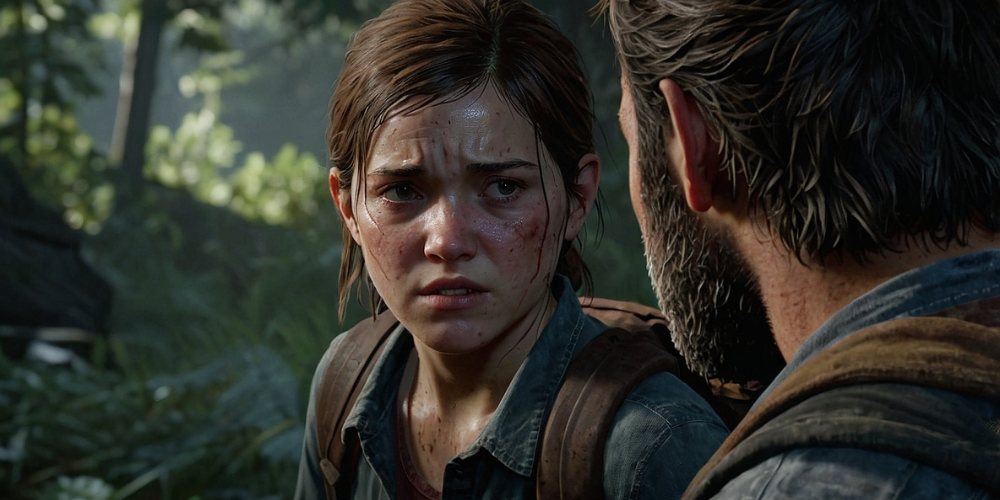Narrative Techniques in The Last of Us Part II
Oct-22-2024

As I embark on a deep dive into the narrative techniques employed in The Last of Us Part II, I’m struck by the way the game intricately weaves character development and thematic depth through a variety of storytelling methods. It serves as a poignant reminder of the weight of choices and consequences.
Immersive Character Perspectives
A key feature that makes the game particularly engaging is its incorporation of various character viewpoints. This approach offers me a chance to experience the narrative through the eyes of different characters, particularly Ellie and Abby. As I switch between their stories, I find myself understanding their motivations and the intricacies of their emotions, creating a more layered narrative that challenges my preconceptions.
Non-Linear Storytelling
The Last of Us Part II employs a non-linear storytelling technique that catches my attention immediately. As scenes unfold out of chronological order, I often feel a sense of anticipation and curiosity about the characters’ journeys. This method keeps me engaged as I piece together the past and present to form a comprehensive understanding of the story’s trajectory.

Emotional Manipulation through Music
Music in the game plays a significant role in shaping my emotional landscape. The score, composed by Gustavo Santaolalla, heightens the tension during dramatic moments while simultaneously evoking melancholy during quieter scenes. Each note resonates with the struggles and triumphs of the characters, pulling me deeper into their experiences.
Environmental Storytelling
As I explore the beautifully crafted environments, I notice the details that tell stories of their own. Every abandoned building, piece of graffiti, and subtle visual cue contributes to the narrative. I often envision the lives of those who previously occupied these areas, deepening my comprehension of the environment the characters move through.
Symbolism and Themes
The recurring themes of revenge and forgiveness resonate throughout the game, expertly woven into the fabric of its narrative. As I witness Ellie’s quest for revenge, I can’t help but reflect on the consequences that such a path entails. The symbolism associated with choice—the stark contrasts between Ellie’s and Abby’s journeys—forces me to confront my beliefs about vengeance and redemption.

Dialogue and Character Development
The dialogue within The Last of Us Part II is both poignant and raw. Through conversations, I get a sense of the characters’ relationships with one another. The way they speak reveals their fears, desires, and the burdens they carry. I experience their motivations, creating empathy that drives me to continue their stories.
Flashbacks as a Narrative Device
Flashbacks play a crucial role in revealing critical backstory and emotional depth. As I navigate through memories of happier times in Ellie’s life, I feel the weight of loss and the stark contrast to her current reality. These moments foster a sense of melancholy that deepens my connection to her character.
Visual Storytelling
The game excels at visual storytelling, presenting scenes and emotions without uttering a single word. Moments of silence speak volumes, allowing me to understand character dynamics through their actions and expressions. These carefully crafted visuals evoke powerful emotions that linger long after I’ve put down the controller.

Climactic Tension and Pacing
The pacing of The Last of Us Part II is masterfully orchestrated. Intense action sequences are balanced with quiet, contemplative moments, allowing me to catch my breath before diving into another harrowing experience. This ebb and flow creates a rhythm that keeps me fully immersed in the story.
Morality and Choices
The moral ambiguities presented throughout the game leave me grappling with difficult questions. Decisions made by characters often stem from deeply personal motivations, and I realize that there are no clear-cut answers. This complexity encourages me to think critically about right and wrong.
Character Relationships and Dynamics
The relationships between characters are anything but straightforward. As I observe the evolving connections between Ellie, Dina, and Abby, I’m reminded of the impacts of loyalty, betrayal, and love. The nuances of each interaction lead me to reflect on my own relationships and the choices within them.
Use of Art and Visual Symbolism
The game’s artistic direction enhances the visual experience and serves as a narrative tool. The choice of color palettes, artistic motifs, and even the character designs communicate underlying themes. The contrast between light and dark mirrors the moral struggles the characters face, creating a visually rich narrative landscape.

Foreshadowing and Reveals
Foreshadowing plays a vital role in the storytelling. Subtle hints sprinkled throughout the narrative keep me on the edge of my seat, waiting for the eventual reveals. The tension that builds due to these carefully placed clues enhances my overall experience and adds layers of complexity to the plot.
The Role of Nature and Setting
The world around the characters is as much a part of the narrative as the characters themselves. The decaying beauty of the post-apocalyptic landscape serves to illustrate themes of survival, loss, and the passage of time. As I navigate through overgrown streets and abandoned cities, I’m constantly reminded of the fragility of life and human connections.
Endings and Their Impact
The endings of both Ellie’s and Abby’s arcs resonate deeply with me. They don’t provide a tidy resolution; instead, they leave lingering feelings and questions. The open-ended nature of the conclusion invites me to reflect on the broader implications of their journeys, making it all the more powerful.
Interactive Storytelling and Player Agency
Finally, the interactive nature of the gameplay allows me to feel a part of the narrative itself. Every choice I make has implications, creating a sense of ownership over the characters’ fates. I find this level of agency both empowering and heavy, reinforcing the emotional weight that lies within the story.







